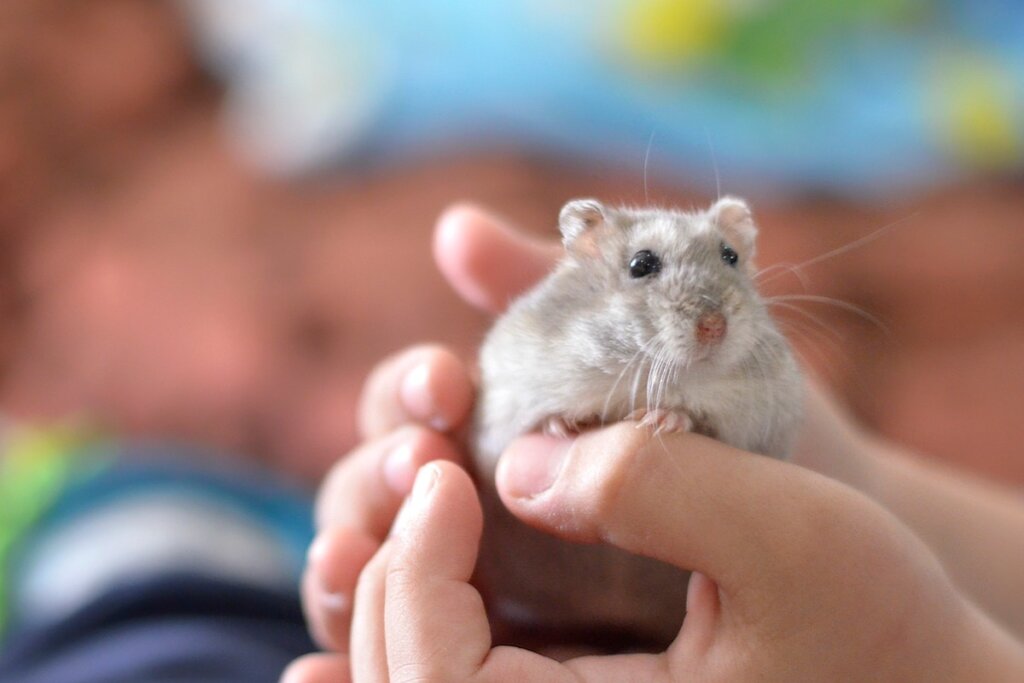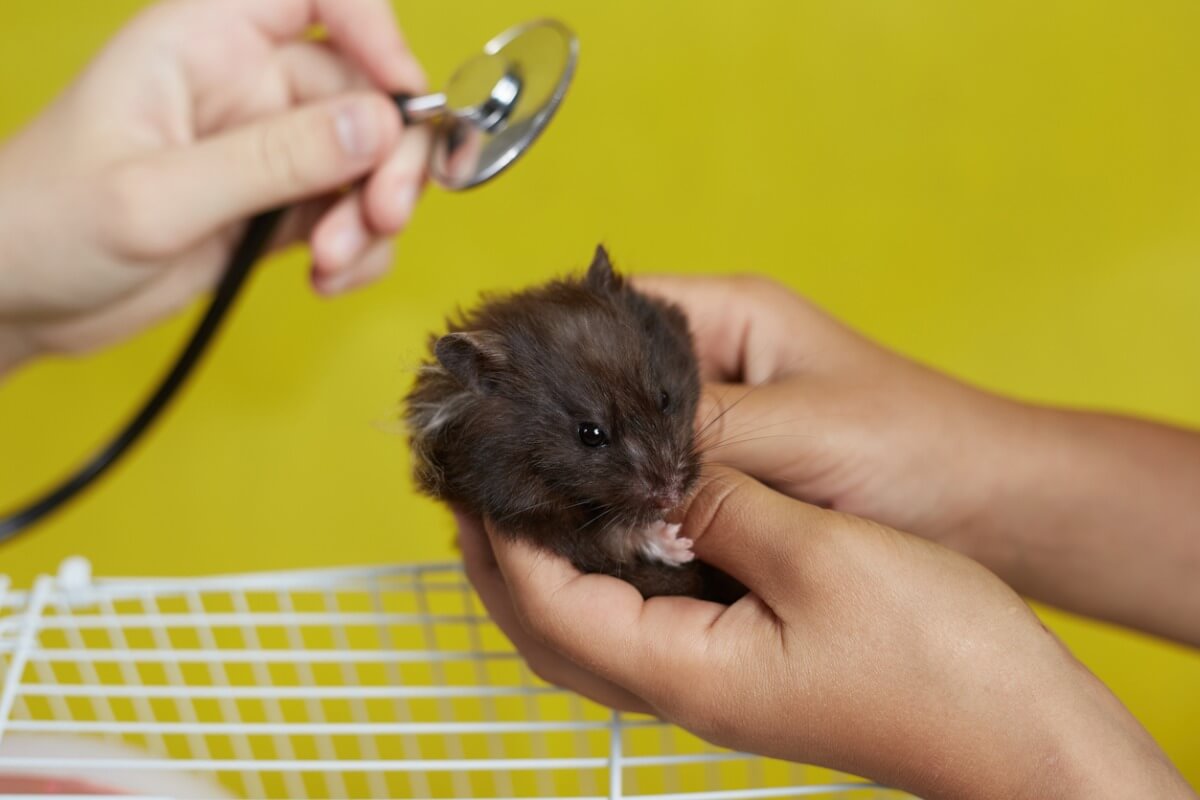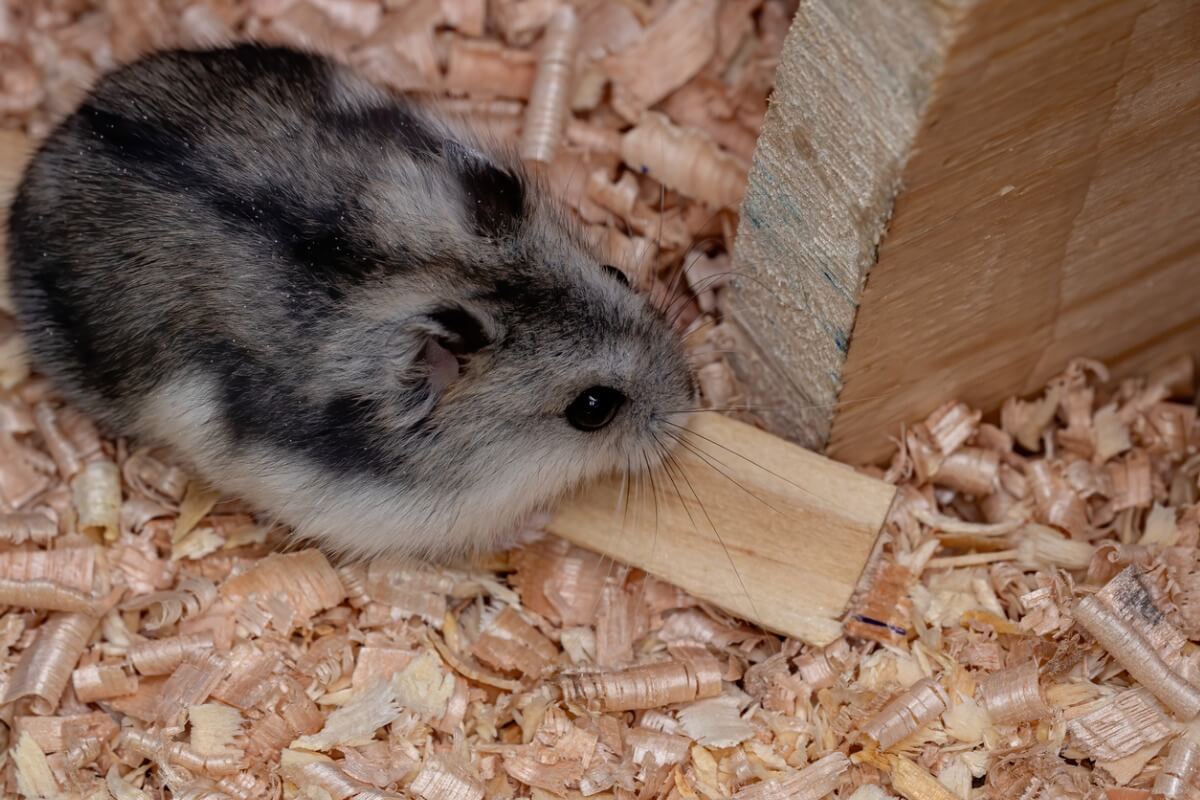Why Is My Hamster Losing Hair?

One of the most adorable features of small rodents is their soft, cottony fur. That’s why seeing a hamster losing hair can cause alarm, in some cases with good reason. But how to differentiate pathological alopecia from a natural one?
In this article, you’ll find the most common causes of hair loss in hamsters. You’re sure to find some useful information. Whether it’s to recognize suspicious alopecia or to improve your rodent’s quality of life, knowing how to appreciate the condition of its fur is a very useful skill.
Why is my hamster losing hair?
Alopecia is an abnormal hair loss, the absence of which exposes the animal’s skin. The characteristics of this condition, as well as the rate of hair loss, provide useful information about the origin of the disease. Here are the most common causes of this condition in hamsters.

A hamster losing hair due to nutritional deficiencies
An inadequate diet can lead to hair loss in these animals. Specifically, hypovitaminosis B causes hair loss, muscle weakness, lethargy, and anorexia (lack of appetite). It’s important to see a vet, as this vitamin B6 deficiency could lead to the death of the animal.
A lack of protein is also a common cause of alopecia in hamsters. In this case, the diet should be reformulated to make it more in line with the rodent’s nutritional needs. However, neither is it appropriate to offer raw meat directly.
External parasites and fungi
An infestation of external parasites (mites, lice and fleas) or fungi such as ringworm will cause alopecia in small hamsters. This can be explained by direct damage to the skin or because the rodent scratches insistently due to itching caused by parasite infestation.
Remember that getting rid of an infestation requires not only treating the animal, but the whole environment. If you don’t, it’s very likely that it’ll reappear.
Scratches
Scratches are the most common cause of alopecia when the hamster’s cage is too small for it. If its fur is constantly rubbing as it passes through holes and tunnels, it’ll fall out until it eventually loses the hair.
Hamsters lose fur during the shedding season
Hamsters, like all mammals, shed their fur as the seasons change. They start shedding in the spring and the process usually lasts until late autumn.
Some species, such as the Russian or Syrian hamster, moult in a more exaggerated way, so you might see some alopecia, but it isn’t usual.
Diseases
Certain health problems are often associated with fur loss. For example, kidney disease is one of them. T-cell lymphoma (a tumor in the lymph glands) is common in older hamsters and also often causes hair loss.
That’s why it’s so important for you to find a vet you can trust. Alopecia without any other associated symptoms can be as harmless as it is fatal. It’s best to go to the clinic as soon as you can, so that the diagnosis can be made as early as possible.
Stereotypies
Hamsters are very active animals and need to be able to occupy the time they spend awake in different activities. Boredom will lead to stress, and stress will lead to stereotypies. These are repetitive and obsessive actions that the animal performs without any function.
One of the most common stereotypies in hamsters is continual grooming, so that they end up leaving hairless areas on their body. To treat this, consult your vet and review how you look after your small rodent, because maybe it needs more environmental enrichment, or you’ll need to eliminate a source of stress for it.
What do I do if my hamster is losing hair?
As has been said in previous lines, the first thing to do when detecting this sign is to make a visit to the vet. There you’ll find professionals who have the means and knowledge necessary to determine the cause of alopecia.
In addition, it’s good to review all the factors that make up your pet care to see if it’s possible to improve anything. Here are some tips to help you:
- Give your hamster a balanced diet: Each specimen has its own needs and you should adjust the diet to them. If your rodent also has an illness, then their food should be adjusted accordingly.
- Take it out to play: Hamsters spend all night looking for food when they’re free. That’s why you shouldn’t leave yours locked up in a cage permanently; you should take it out every day for at least an hour. Prepare a suitable space and supervise their activity.
- Rotate its toys: If you see that your rodent plays for a while with a toy you give it and then leaves it alone, then try to buy several toys and change them every so often. This will help to reduce boredom and avoid behavioral pathologies.
- Be consistent with treatments: Especially when it comes to antibiotics or infestations, consistency and discipline in treatment are the keys to preventing these illnesses from recurring.
- Get a suitable cage: Your hamster must be able to move freely, build a shelter, and have toys without being cramped. A quality cage is beneficial for them at all levels.

Except in rare cases, hair loss in hamsters is easily solved. If you make sure your little one is well cared for, then prevention and recovery from disease will be much more effective and they’ll have lustrous hair again in a matter of weeks.
All cited sources were thoroughly reviewed by our team to ensure their quality, reliability, currency, and validity. The bibliography of this article was considered reliable and of academic or scientific accuracy.
- Karaer, Z., Kurtdede, A., Ural, K., Sarı, B., Cıngı, C. Ç., Karakurum, M. Ç., & Haydardedeoğlu, A. E. (2009). Demodicosis in a Golden (Syrian) hamster (Mesocricetus auratus).
- Shwartzman, G., & Strauss, L. (1949). Vitamin B6 Deficiency in the Syrian Hamster: Ten Figures. The Journal of nutrition, 38(2), 131-153.
- Fischer, K., Gebhardt-Henrich, S. G., & Steiger, A. (2005). Behaviour of golden hamsters (Mesocricetus auratus) kept in four different cage sizes (Doctoral dissertation, Verlag nicht ermittelbar).
- Liebscher, J. & Hein, J. (2022). Cuando nos son hongos, ni parásitos: Causas endocrinas de lesiones dermatológicas en pequeños mamíferos. LABOKLIN aktuell. Recuperado el 4 de diciembre de 2022, disponible en: https://es.laboklin.info/wp-content/uploads/la_derma_august_2022_es.pdf
- Comas, A. M. (2010). Estudio de la agresividad en machos de hámster dorado (Mesocricetus auratus). Anales Universitarios de Etología, 4:47-53.
